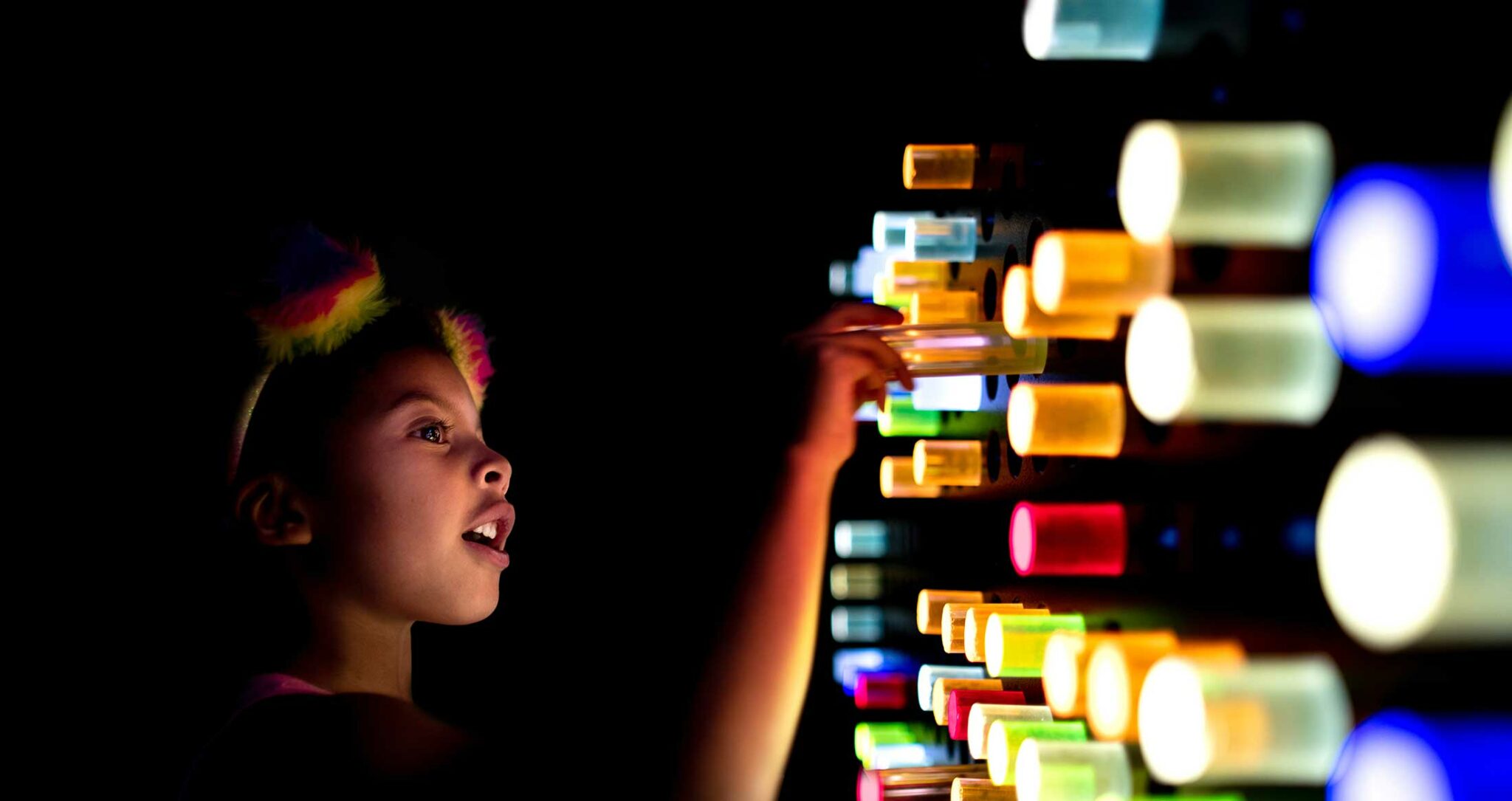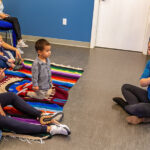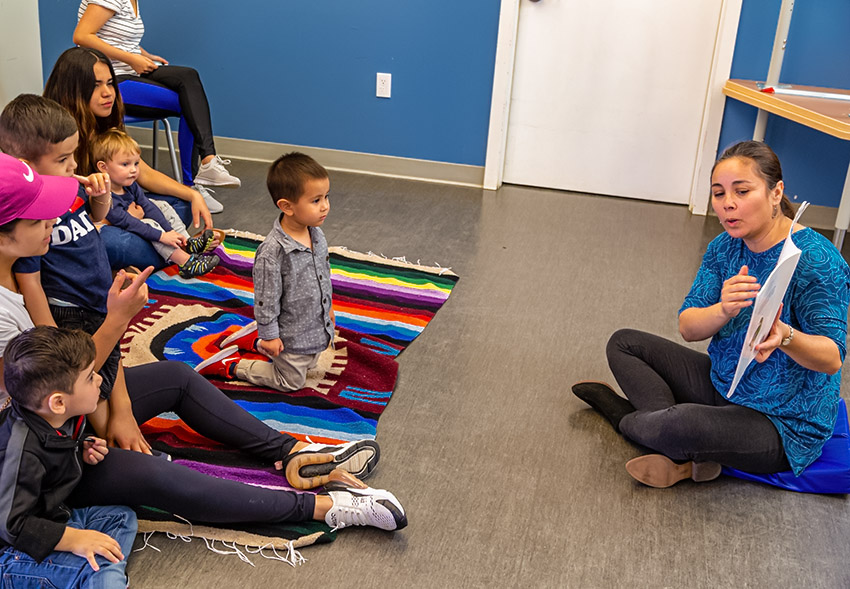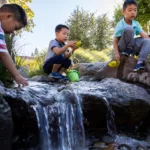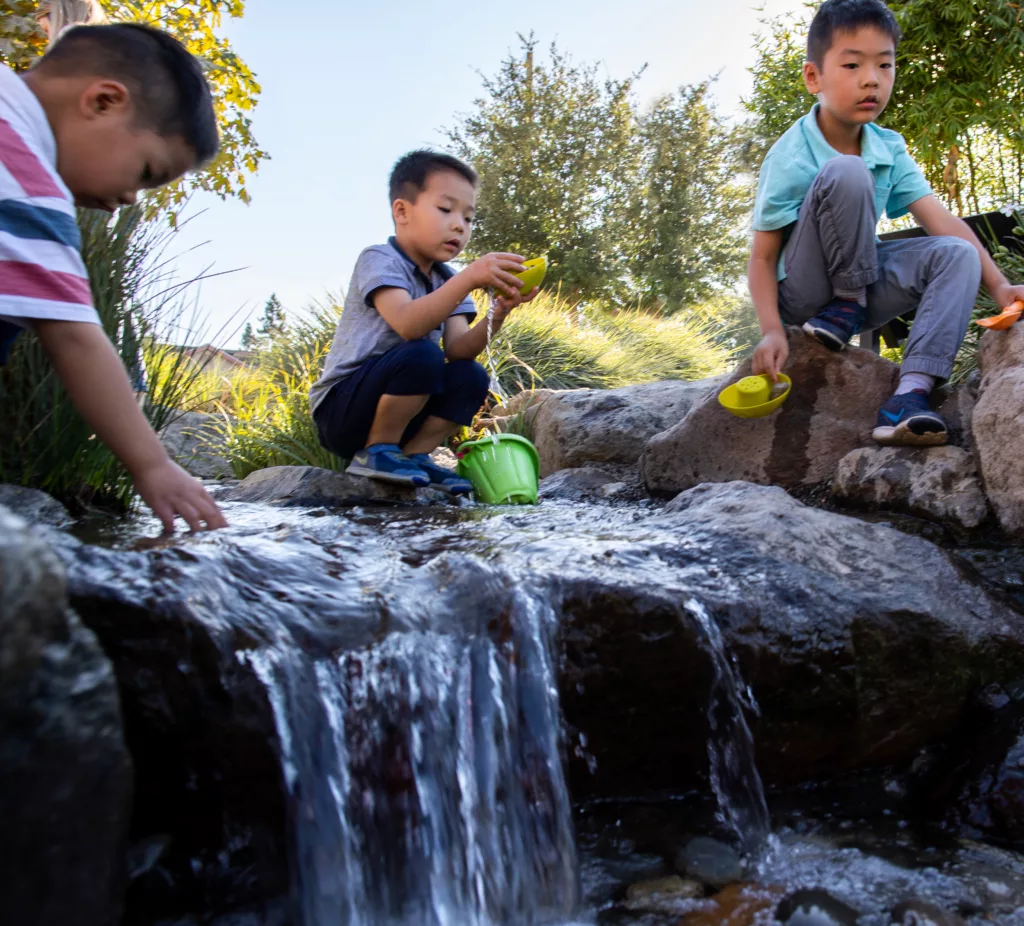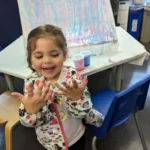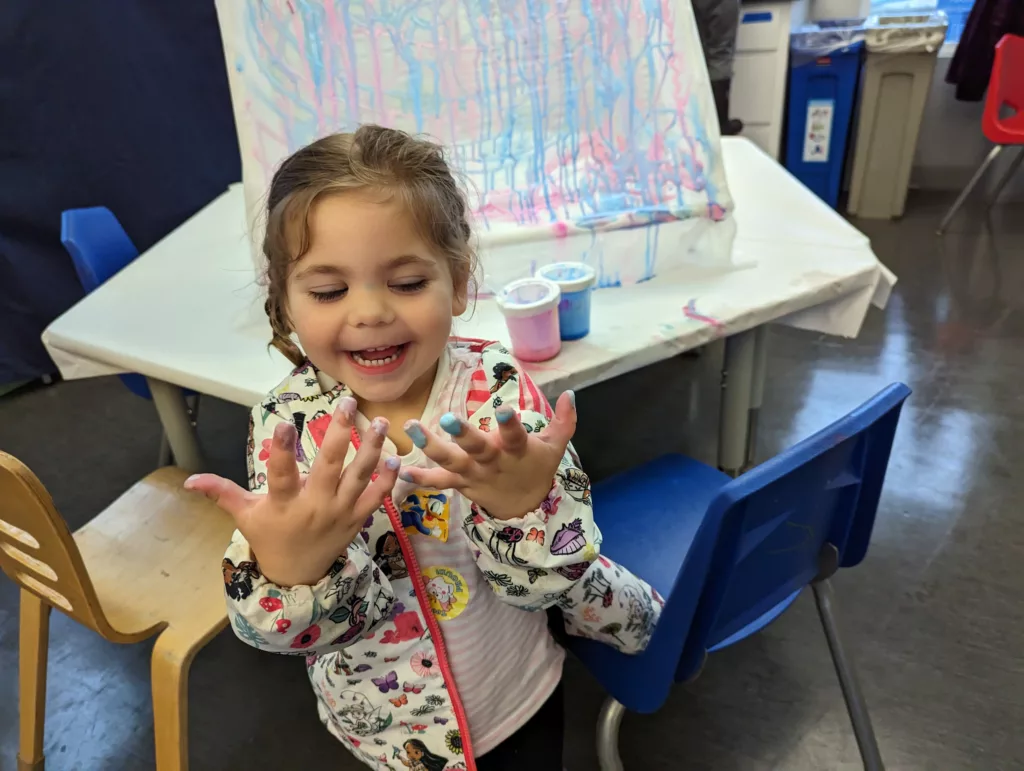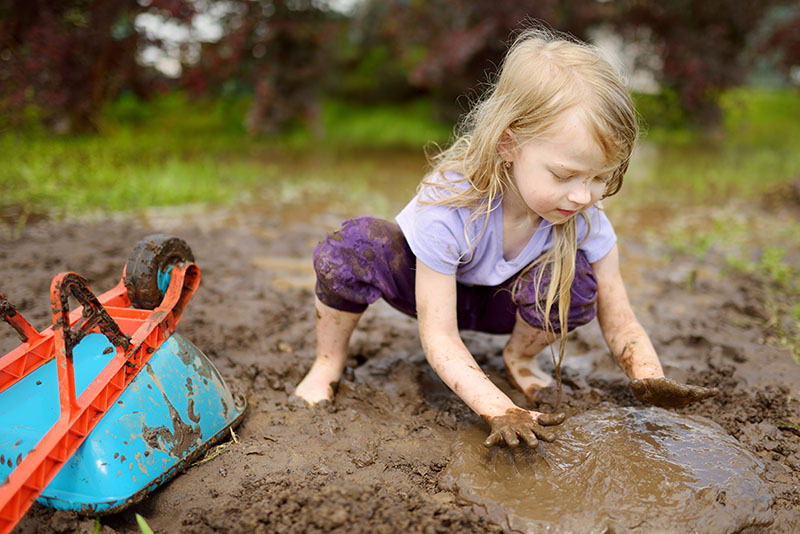
Play is incredibly powerful. Most adults can still recall childhood memories of playing outside with their friends until the street lights come on and returning home before dark – but today, playtime looks a bit different.
Now, children’s playtime tends to include a lot more adult guidance or way more electronic screens – but most likely a mix of both. In many metropolitan communities, our environment is simply not designed to allow children to play freely and as busy caregivers, our daily routines rarely prioritize unconstructed time.
At the Children’s Museum of Sonoma County, we understand that playing allows children to express themselves in healthy ways and helps them learn about the world around them. We are dedicated to empowering children to learn through play, and we do so by reintroducing adventure back into playtime!
What is Adventure Play?
At its core, adventure play is any opportunity that inspires kids to traverse, create, and engage with their surroundings without strict adult guidance or restrictions. It is centered around creating opportunities for kids to try new things, and being creative in figuring out how to accomplish the goals they set for themselves.
This type of self-directed play allows children to test their own capabilities while learning how things work, at their own pace. The adventure lies in the natural curiosity of young children, and the play is an organic result of their limitless imaginations, creativity, and resourcefulness.
What is an Adventure Playground?
The adventure playground was introduced in the 1940s by a Dutch professor of architecture, Carl Theodor Sørensen. In the many years Sørensen designed playgrounds he noticed that children would lose interest in the actual play structure quite quickly. They were more interested in digging in the mud, and playing with things like cement blocks and refuse wood, than stationary slides and monkey bars.
Thus, adventure playgrounds were born. Sørensen began building children’s playgrounds that were specifically designed to cater to self-directed play and inspire them to interact with their surroundings according to their own ideas. These unconventional play spaces were originally called, “skrammellegepladser”, which literally translates to “junk playgrounds”. They incorporated lots of loose parts and eccentric equipment that quickly proved to be invaluable to children.
Today, Sørensen is known as one of the greatest architects of the 20th century, and versions of his infamous “junk playgrounds” can be found throughout the U.S. and Europe.
The Benefits of Adventure Play in Early Childhood Development
Toddlers are natural-born adventures. They learn how the world around them works by exploring their surroundings and testing their own skills. Encouraging self-guided play allows toddlers to make their own decisions and experience new situations. Both of which are fundamental elements of adventure play and a healthy part of early childhood development.
Adventure play can help toddlers:
- Improve motor skills like balance, dexterity, and flexibility
- Practice social skills and teamwork
- Utilize creative thinking and resourcefulness
- Build confidence and independence
- Learn how to use new tools to achieve more complex tasks
- Practice problem solving through trial and error
- And much more!
Is Adventure Play Safe for Toddlers?
For many caregivers, the idea of letting a toddler manage themselves and direct their own activities during playtime can feel very counterintuitive. Generally, children’s playtime and the environments they play in are heavily controlled by adults. The games and activities they participate in are organized and supervised by an adult, who is ready to step in and resolve any challenges or disagreements that may arise.
During adventure play, a child should be able to self-direct their activities and manage their time with as little guidance from you as possible. However, it will always be the adult’s job to ensure the safety of the child they are caring for, but every little one is unique – You know your children better than anyone, so give them the freedoms you know they can manage.
Provide Toddlers with Opportunities to Take Risks
Many studies on early childhood development have found that providing children with opportunities to choose to take risks during playtime has positive impacts on their development. In a Popular Science article, “The Elements that Make a Perfect Playground”, author Lauren Leffer writes, “All the experts we spoke with agreed that the chance for kids to take appropriate risks and challenge themselves is absolutely central to productive play.”
Sometimes, the hardest part is not letting your own fears get in the way of your toddler’s adventure play. You can learn more about the value of risk in playtime in our previous blog post, “Risk vs. Hazard: The Value of Risk in Playtime For Children”.
Experience the Value of Adventure Play with the Children’s Museum of Sonoma County
At the Children’s Museum of Sonoma County, we encourage children to experience adventure play in a safe and healthy environment and provide families with resources to create their own adventures at home!
Our PLAYology Playbook blog is full of at-home activities you can do with kids of all ages, as well as additional information on the benefits of adventure play in early childhood development.
Our museum is designed to provide purposeful, hands-on, adventurous playtime to infants, toddlers, and children of all ages and learning levels. Plan your visit to the Children’s Museum today, and enjoy valuable adventure play with the CMOSC team!
Sign up for E-News!
Sign up for E-News Form
